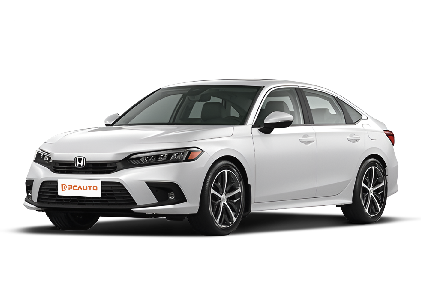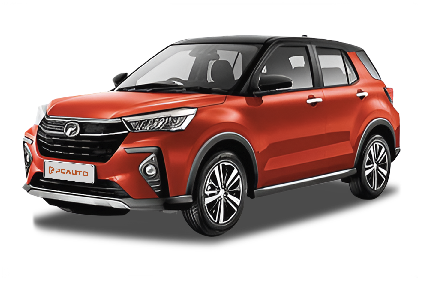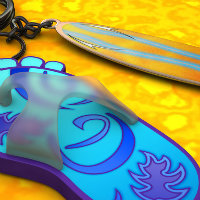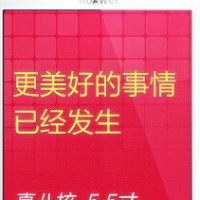Q
how to get digital road tax malaysia
Getting your Digital Road Tax in Malaysia is a total breeze these days, folks. Car owners can handle the whole application and download process right through the MyJPJ app. Here's the drill: first, head to your phone's app store, download MyJPJ, and sign up for an account. Once logged in, hit the "Road Tax" option, punch in your license plate number and vehicle details. The system'll then show you the amount due. Double-check that, pay up using a credit card or online banking, and boom—your digital road tax gets automatically stored in the app. You can pull it up anytime for inspections, no more messing with that old paper sticker on your windshield.
Important thing to note: this digital version carries the exact same legal weight as the physical one. Police or enforcement officers just scan the QR code to verify it's legit. Also, make sure your MyJPJ account is linked to the correct phone number so you get payment reminders and updates. And hey, don't forget to check your car insurance status regularly—you need active insurance before renewing your road tax. This digital move is not only eco-friendly but also cuts down on the risk of losing that paper tax. Looking ahead, Malaysia's Transport Ministry might roll out even more digital services, like electronic driving licenses, making life easier for all of us behind the wheel.
Special Disclaimer: This content is published by users and does not represent the views or position of PCauto.
Popular Models
Related Q&A
Q
What engine is in a 2014 Holden Colorado?
The 2014 Holden Colorado offered two turbocharged four-cylinder diesel options – a 2.5L unit pushing out 110kW and 350Nm, and a more potent 2.8L variant delivering 147kW and 440Nm. Both engines feature common-rail direct injection, striking a balance between fuel efficiency and strong low-rev torque that's perfect for towing or hauling loads.
Built as a workhorse ute, the Colorado's powertrain prioritizes durability and low maintenance costs. Buyers could choose between a five-speed manual or six-speed auto transmission. These diesel mills really shine when tackling steep inclines or carrying payloads – their torque-rich nature delivers effortless climbing and smooth acceleration. Modern diesel tech also means they're far more refined than old-school oil-burners, with noise and vibration levels approaching petrol-engine smoothness.
Pro tip: Stick to the recommended service intervals (especially diesel filter changes) and always use quality fuel to keep these engines performing at their best.
Q
Is the 2018 Mercedes AMG GT reliable?
The 2018 Mercedes-AMG GT has proven to be fairly reliable overall. Its hand-built 4.0L V8 biturbo engine—tuned by AMG—delivers brutal power while maintaining decent mechanical robustness, with relatively few reported major issues. That said, expect higher running costs than your average commuter car. You'll chew through brakes and tires much faster, and those AMG-specific parts don't come cheap.
The tech suite can be a bit fussy at times—we're talking occasional glitches like infotainment gremlins or false sensor warnings—but most issues are sorted with a software patch or minor fixes. Stick religiously to the factory maintenance schedule using genuine fluids and components, and you'll dodge 90% of potential headaches.
Driving enthusiasts will find the visceral exhaust note and razor-sharp handling worth every penny, though that low-slung front splitter means you'll be dodging potholes like they're landmines. If you're shopping used, prioritize examples with full dealer service history and get a prepurchase inspection focusing on the transmission, suspension, and cooling system—these are the big-ticket items that could ruin your day.
Q
How much is a used Mercedes GLE 2024?
In Malaysia, the price of a used 2024 Mercedes-Benz GLE can vary depending on factors like condition, mileage, specifications, and warranty status. Right now, new models go for around RM500,000 to RM700,000, so used ones are probably in the RM400,000 to RM600,000 range—exact pricing depends on actual availability and market trends. As a luxury SUV, the GLE is popular for its great comfort, advanced tech features, and strong performance. The 2024 model likely comes with the latest MBUX infotainment system and driver assistance functions, making the experience even better. When buying a used GLE, it’s a good idea to go through official certified channels or reputable dealers to make sure the vehicle has been thoroughly inspected and still has warranty coverage. Also, check the maintenance records and accident history to avoid potential issues. Besides that, Malaysia’s used car market is affected by import taxes, exchange rates, and supply and demand, so prices can change anytime. It’s wise to compare options and consult professionals before making a purchase.
Q
What is the most sold Toyota in 2023?
Looking at global and Malaysian market data for 2023, Toyota's top-selling model is the Corolla Cross. This compact SUV has won over plenty of buyers with its versatility, fuel efficiency, and the tried-and-true reliability Toyota is known for. Here in Malaysia, it's a hit because it blends city-friendly agility with just enough off-road capability to handle local road conditions, making it perfect for family needs.
In Southeast Asia, the Corolla Cross comes in both petrol and hybrid variants, and the hybrid is especially popular. Let's face it, with fuel prices being what they are, Malaysians really appreciate the significant fuel savings hybrids deliver – that's a big selling point.
But Toyota's success in Malaysia isn't just about the Corolla Cross itself. They've got a solid after-sales service network, and their vehicles hold their value well on the used car market – two things that matter a lot to local car buyers. Sure, competitors like the Honda HR-V and Mazda CX-30 are strong contenders, but Toyota stays ahead thanks to the trust people have in the brand and generally lower maintenance costs.
Q
How much is Innova Zenix 2023 in Malaysia?
The 2023 Toyota Innova Zenix comes with varying price tags in Malaysia depending on the trim and specs you go for. The base 2.0X starts at around RM 165,000, while the top-spec 2.0V can set you back roughly RM 180,000. Keep in mind, these prices might dip a bit with dealer promotions or if you opt for extra accessories.
As Toyota's main player in Malaysia's MPV segment, the 2023 Innova Zenix gets some solid upgrades – think a snazzier exterior, nicer interior materials, and better tech. Highlights include a bigger touchscreen, advanced driver-assist systems, and a more efficient 2.0L naturally aspirated engine, striking a good balance between family-friendly comfort and practicality.
Malaysian buyers have long loved the Innova Zenix for its reliability, roomy cabin, and strong resale value. It’s especially popular with big families or folks who hit the road for long drives often. If you’re in the market for an MPV, besides checking the price, it’s worth cross-shopping against rivals like the Honda BR-V or Mitsubishi Xpander to find the one that best fits your needs and wallet.
Q
Who makes the most reliable CVT transmission in 2020?
Back in 2020, Toyota and Honda were widely regarded as two of the top brands when it comes to building reliable CVT transmissions, and they've also got a solid reputation in the Malaysian market. Toyota's Direct Shift-CVT really steps up the game by adding a launch gear, which boosts both durability and responsiveness—perfect for zipping around the city. Honda's CVT, on the other hand, is all about that smooth, seamless ride and great fuel economy, which is why you'll find it in popular models like the City and Jazz. Nissan's Xtronic CVT is no slouch either; it's proven to be pretty steady, especially in models like the X-Trail and Almera where it adapts well to different driving conditions.
CVTs are loved for their continuously variable gear ratios, delivering a super smooth drive and better gas mileage. But here's the thing—unlike traditional automatic gearboxes, they need a bit more TLC. Regularly changing the specific CVT fluid is crucial to prevent overheating issues down the line. For Malaysian buyers looking at CVT-equipped cars, it's smart to check out the brand's reputation and how well the model suits local conditions. And don't skip the manufacturer's maintenance recommendations—sticking to those will go a long way in keeping your CVT reliable for years to come.
Q
What size is the LDV T60 2022?
The 2022 LDV T60 is a mid-size pickup truck, measuring 5365mm in length, 1900mm in width, and 1809mm in height, with a wheelbase of 3155mm. This sizeable footprint translates to a roomy cabin for passengers and a practical cargo bed, making it a solid fit for Malaysian users—whether it's for daily commuting or getting those business deliveries done. With a ground clearance of 215mm, the T60 boasts decent off-road capability, easily handling Malaysia's diverse road conditions, be it smooth city tarmac or those rough and tumble rural tracks. Under the hood, you'll find a 2.0-litre turbocharged diesel engine, which serves up plenty of grunt while keeping fuel consumption in check—perfect for those long drives or when you need to haul a heavy load. For Malaysian buyers, when picking a pickup, size and power are important, but so is durability and a reliable after-sales network. The LDV T60 strikes a good balance in these areas, making it a practical choice worth considering.
Q
How much does the Omoda C9 cost?
Over in Malaysia, the Omoda C9 is starting at around RM108,800, though the exact price can vary a bit depending on the trim level you pick and any ongoing promotions. Your best bet is to hit up your local authorized dealer for the latest figures. As a fresh-faced SUV in the market, the C9 is all about that youthful vibe and tech-forward features. Under the hood, you're looking at a 1.5L turbocharged engine pushing out 147 horsepower, paired with a smart infotainment system and some pretty solid advanced driver assistance features – all in all, it’s shaping up to be a pretty competitive package for the money. If you’re a Malaysian shopper, besides keeping an eye on the sticker price, it’s worth checking out the government’s EEV (Energy Efficient Vehicle) tax incentives. Some models that meet the criteria might score you a nice little tax break. Also, before you sign on the dotted line, do yourself a favor and cross-shop with segment rivals like the Proton X70 or Honda HR-V. Figure out which specs matter most for your needs, and definitely don’t skip booking a test drive to get a real feel for how it handles.
Q
How much is Omoda C9 PHEV in Malaysia?
Omoda hasn't officially announced the price tag for the C9 PHEV in Malaysia just yet. But if we look at where Omoda positions itself in the market and check out the current price range of other plug-in hybrid SUVs in the same class – think Proton X90 or Haval H6 HEV – we're probably looking at a ballpark figure between RM120k to RM150k. Of course, we’ll have to wait for the brand to drop the official numbers to be sure.
Billed as an eco-friendly and tech-forward SUV, the Omoda C9 PHEV is expected to pack a 1.5-liter turbocharged engine paired with an electric motor for its plug-in hybrid setup. Word on the street is it might deliver over 50km of pure electric range, which should be more than enough for daily commutes and help keep those fuel bills in check.
Good news for buyers: Malaysia’s government offers import tax breaks and road tax incentives for PHEV models, so you could save even more when you sign on the dotted line. If this Omoda has caught your eye, your best bet is to keep tabs on Omoda Malaysia’s official channels or swing by an authorized showroom for the latest deets. And hey, it never hurts to cross-shop with other PHEV SUVs in the segment – compare specs, after-sales policies, and all that jazz to make sure you’re getting the ride that fits your needs like a glove.
Q
What is the most scrapped car in 2024?
Industry data for 2024 shows Malaysia's most commonly scrapped vehicles are predominantly aging models over 15 years old – think early 2000s economy cars. These workhorses are hitting the scrapyard mainly due to outdated technology, skyrocketing repair bills, and the country's tightening emissions regulations.
Locally assembled classics like the older Proton Saga and Perodua Kancil top the scrap heap, which makes sense given their massive market penetration back in the day and the natural wear-and-tear from years of faithful service. Adding to the scrap pile: some diesel vehicles and older MPVs that can't keep up with the latest emissions standards as the government ramps up its green initiatives.
For owners, letting go of these old-timers isn't just about avoiding wallet-crushing repair costs. Programs like MARP (Malaysia Automotive Rebate Programme) sweeten the deal with new car subsidies, all while doing your part for the environment. Here's the tip: keep a close eye on your car's condition. When maintenance costs start outweighing what the car's actually worth, it's time to consider upgrading to a newer, more fuel-efficient model. You'll get better safety features and ride the wave of eco-friendly motoring – a win-win.
Popular Cars
Model Year
Car Compare
Car Photo
Latest Q&A
Q
How much does it cost to buy a 2024 Tesla Model 3?
The 2024 Tesla Model 3 starts at around RM 175,000, but the final price depends on your chosen configuration and add-ons. Opt for the Long Range or Performance version, and you’re looking at a higher tag.
As Tesla’s entry-level model, it packs cutting-edge EV tech, including 500+ km of range on a single charge and standard Autopilot for both daily commutes and road trips. Just keep in mind extra costs like insurance, registration, and potential home charger installation.
Tesla’s Supercharger network is expanding locally, with solid coverage in major cities, making charging hassle-free. Maintenance costs? Typically lower than gas cars—no oil changes, fewer moving parts—so long-term savings add up.
If you’re after more thrills, the Performance variant hits 0-100 km/h in roughly 3 seconds. Plus, government EV tax perks help soften the upfront cost.
Q
How reliable is the 2024 Model 3?
The 2024 Model 3 delivers solid reliability, thanks to Tesla’s continuous software updates and hardware refinements. Key areas like the battery management system and Autopilot have seen multiple optimizations, leading to a noticeable drop in failure rates.
This model features a stiffer body structure and an improved suspension setup, offering a smoother ride. Upgraded interior materials also help reduce cabin rattles—a common gripe with earlier builds.
EV maintenance costs remain low (no oil changes, etc.), though it’s wise to periodically check battery health and charging components for long-term performance. For shoppers eyeing EVs, charging infrastructure and home charging options matter—thankfully, public chargers are expanding fast, making daily use more convenient.
If you frequently road-trip, planning charging stops ahead helps. While the range easily handles daily drives, a little route prep goes a long way in maximizing the experience.
Q
What is the battery range of the Tesla Model 3 2025?
The battery range of Tesla Model 3 2025 is expected to be optimized based on existing models, and specific data needs to be released officially. However, referring to the EPA range of the 2024 rear wheel drive version, which is about 438 kilometers, and the high-performance version, which is about 513 kilometers, the 2025 model may further improve, especially in terms of battery technology or energy efficiency management. For electric vehicles, the range is greatly affected by driving habits, road conditions, and climate. Air conditioning may slightly reduce the range in hot weather, but the battery thermal management system can usually maintain stable performance. In terms of charging, Model 3 supports super fast charging, which can replenish about 250 kilometers of range in about 15 minutes, while home charging stations require 6-8 hours to fully charge. Daily commuting or long-distance travel are practical enough, it is recommended to follow Tesla's official website or local showroom for the latest information.
Q
Is the 2024 Model 3 worth the price?
The 2024 Model 3 strikes an impressive balance between price and performance. Its upgraded range, more refined interior, and enhanced autonomous driving features genuinely boost its competitiveness—especially for tech-savvy, eco-conscious buyers.
Tesla optimized the battery efficiency this time around, making it suitable for both daily commutes and longer trips, while the handling stays true to the brand’s signature responsiveness. If your budget allows and you’re open to EVs, this one’s worth considering—though a test drive is wise to see if it matches your driving style.
That said, local charging access matters. While public chargers are becoming more common, home installation costs should factor into your budget. Alternatives in this price range exist, so cross-shop specs and service policies (like warranty coverage or charging network support) to make a well-rounded decision.
Q
How many miles does a 2024 Tesla Model 3 get?
The 2024 Tesla Model 3 offers varying range figures depending on configuration. The rear-wheel-drive (RWD) version delivers an EPA-estimated 272 miles (approx. 438 km), while the all-wheel-drive Long Range model pushes that to around 341 miles (roughly 549 km). Real-world range may vary slightly based on driving style, road conditions, and climate.
As a pure EV, the Model 3 achieves this efficiency thanks to its advanced battery management system and lightweight design. It also supports fast charging—at a Tesla Supercharger, you can add up to 200 km of range in about 15 minutes. Whether for daily commutes or longer trips, that’s more than enough for most drivers, especially with charging infrastructure becoming more widespread.
If you need to maximize range, tweaking your driving mode or using the car’s built-in energy optimization features can help squeeze out even more miles.
View MoreLatest News

2026 Toyota HiLux receives five-star ANCAP safety rating in ANCAP
MichaelDec 12, 2025

November 2025 Malaysia B-Segment SUV Sales: Proton X50 ranks champion again with 2,123 units sold
Kevin WongDec 12, 2025

GWM Wey G9 CKD off the production line, set to launch in Malaysia in early 2026
JamesDec 12, 2025

Kia 2026 Malaysia Market Relaunch: Sole Proprietorship Takes Over Agency, Starting with Three Key Models - EV9, Carnival, and Sportage
Kevin WongDec 12, 2025

In November 2025, Malaysia's car registration volume was 77,876 units, a month-on-month decrease of 4.4%, with xEV penetration rate reaching 10.3%.
RobertDec 12, 2025
View More


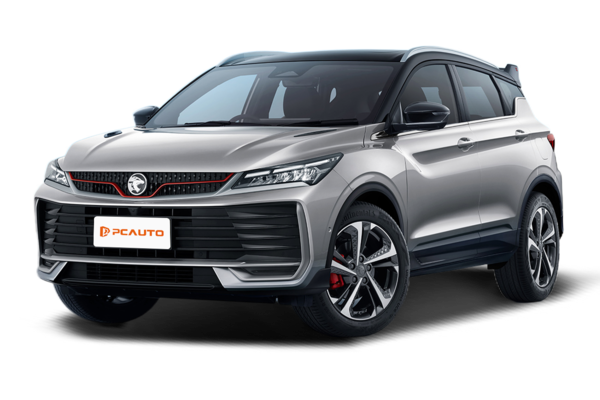
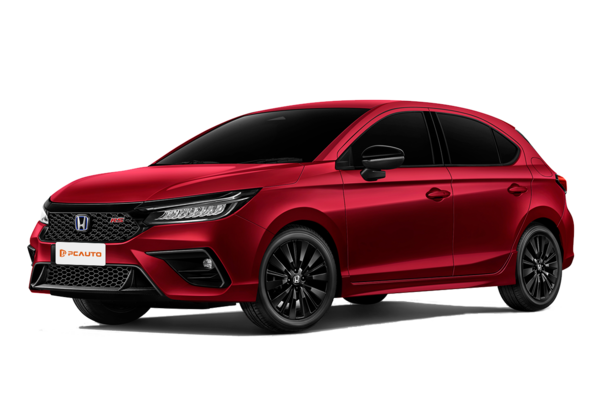
 Cars
Cars